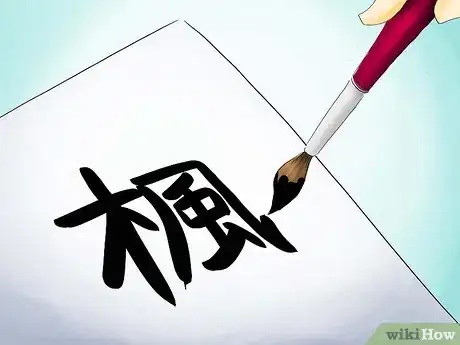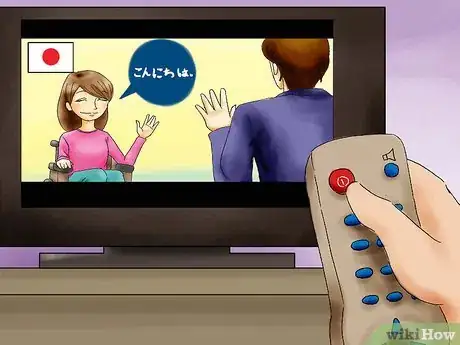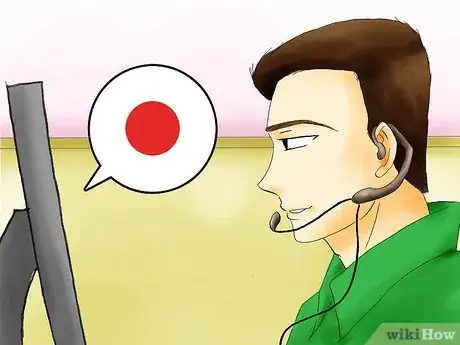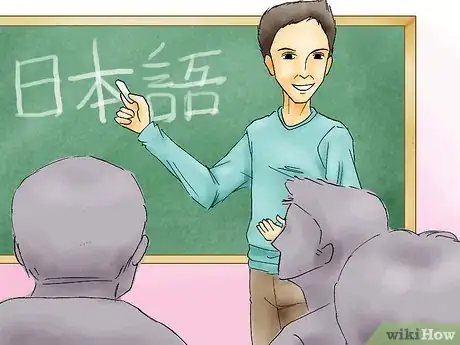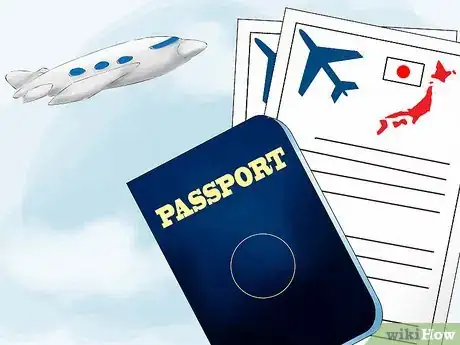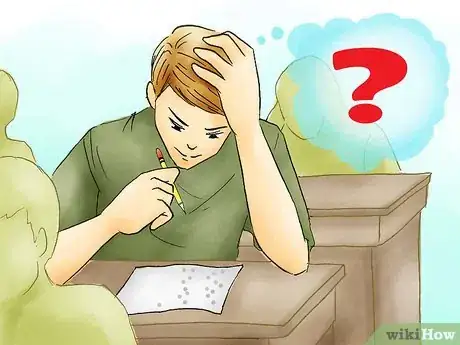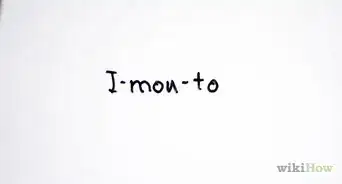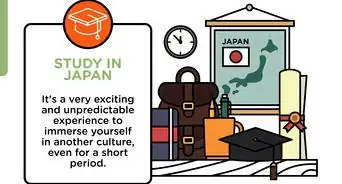X
wikiHow is a “wiki,” similar to Wikipedia, which means that many of our articles are co-written by multiple authors. To create this article, 22 people, some anonymous, worked to edit and improve it over time.
This article has been viewed 128,810 times.
Learn more...
The first thing that you need is motivation. If you are unsure about learning Japanese you may as well not read the rest of this article.
Steps
-
1Master Hiragana and Katakana after/while learning the basics of Japanese grammar. A large number of Japanese language learning materials for foreigners use romaji (roman script) as a pronunciation aid. This is effective only to a point---written Japanese almost never uses romaji; rather, it uses a mix of hiragana, katakana, and kanji. Knowing the first two will open your doors into knowing the third, build your literacy skills in Japanese, and enable you to take the JLPT.
-
2Learn Kanji (Chinese characters). If your goal is total written and spoken fluency in Japanese, you need to know a minimum of 1,500 to 3,000 Kanji for functional literacy.[1] The best way to learn these is through graded formal lessons, flash cards, and extensive practice.
- Well educated and well read Japanese may know as many as 10,000 Kanji. Kanji represent loan words from Chinese into Japanese, they are used to distinguish homonyms and synonyms, they are used in names, in grammatical functions, and specialized vocabulary.
- Japanese Kanji often differ in meaning and usage from Chinese characters as used in contemporary Chinese as well as Korean. Learning how to read Chinese won't necessarily help you with Japanese.[2]
Advertisement -
3Try to expand your vocabulary. Different methods work for different people: flashcards, textbooks, memorize, Manga, etc. Check what's available to you.[3]
-
4Listen to as much Japanese as possible. Volunteer at your local Japanese Community Centre, befriend Japanese people, watch Japanese television, films, theatre, anime, and YouTube clips, listen to Japanese music---both modern and traditional. If you have access to English subtitles, make use of them, but try not to depend on them as your Japanese advances.
-
5Understand politeness levels. In Japanese, the words or phrases you say may change depending on who you're talking to. For example, "How are you?" can be said as "Genki?" or "O genki des ka?" depending on how polite you are being.[4]
-
6Hire a Japanese tutor and/or take formal language classes. The best way to absorb the language and culture is by interacting with native (trained) speakers who know how to walk you through the thinking, dos, do nots, and subtitles within Japanese.
-
7Don't get stuck on the slang. Japanese has many spoken dialects and city-specific slang spanning Hokkaido to Okinawa. Work with what you know and expand gradually from there. Almost all textbooks and learning resources teach you Standard Japanese, which is universally spoken and understood across Japan and is an effective base for building upon your knowledge.
- The above said, learning a colloquial Japanese dialect will prove useful depending on where in Japan you live and how natural you want to sound. Dialects contain a lot of regional colour that Standard Japanese can lack.
-
8Spend time in Japan, if you can. If total fluency is still your goal, you have to live Japanese in order to master Japanese, which means that you should travel to and spend time in Japan. Japan has many job and study opportunities for foreigners, you simply have to find, target, and aim for it.
- Be well aware of the necessary paperwork and customs you are expected to abide by in Japan. Furthermore, naturalization into becoming a Japanese citizen is not easy. Do your homework and ask questions.
-
9Take the Japanese Language Proficiency Test (JLPT or 日本語能力試験). The JLPT is an international, graded, five level Japanese proficiency exam hosted by the Japan Educational Exchanges and Services (JEES) and the Japan Foundation that is designed to assess and evaluate your Japanese-language proficiency. It will grade you on kanji and vocabulary, listening comprehension, and reading comprehension and grammar. N5 is lowest level of the exam available, N1 is the highest (near-native) level. The JLPT can be taken almost anywhere in the world, usually through universities and Japanese Cultural Centres. Take each exam when you feel you that your language skills are good enough to.[5]
- JLPT practice materials and tutors are available in many major international cities and through iPod apps! Again, do your homework and see what works for you!
Advertisement
Community Q&A
-
QuestionAre there translation books that would help me learn Japanese?
 Community AnswerYes. Visit a bookstore and you should find phrasebooks as well as Japanese-English dictionaries. You could also look online.
Community AnswerYes. Visit a bookstore and you should find phrasebooks as well as Japanese-English dictionaries. You could also look online. -
QuestionHow could I start to learn Japanese a little more quickly?
 Community AnswerImmersion is one of the most important aspects. However, since actually going to Japan and staying there for awhile can be pricey, watch different shows, listen to Japanese music, and try reading books in Japanese.
Community AnswerImmersion is one of the most important aspects. However, since actually going to Japan and staying there for awhile can be pricey, watch different shows, listen to Japanese music, and try reading books in Japanese. -
QuestionDo we really need to learn kanji?
 Community AnswerYes, it is important.
Community AnswerYes, it is important.
Advertisement
References
About This Article
Advertisement

